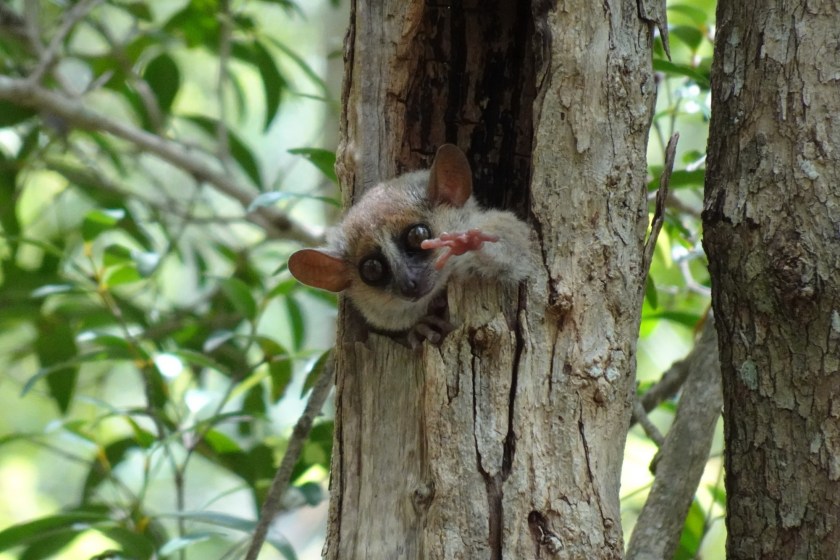The largest seed of any plant in the world is the nut from the coco de mer palm tree, which is found only in the Seychelles. It is a protected species and only rarely are specially certified nuts available for sale, much to Laurel’s disappointment because the meat is said to have a unique and intriguing taste. We never saw a real nut for sale but every gift shop in the country is filled with replicas. Not because of their rarity, size or taste, but because the two lobes of the nut come together in a shape that is reminiscent of a woman’s crotch. A feature that is even more exaggerated in the souvenirs and novelties.

We encountered the real tree in a botanical garden in Victoria, the capital of the Seychelles, which is on the island of Mahe. When we stumbled across the tree, we didn’t realize it was a coco de mer at first but were immediately impressed by the size of its nuts.
The Seychelles is made up of dozens of islands spread across several groups. Earlier we visited the Aldabra Group of the country. Mahe is part of the granitic islands. Granitic was a new word for us but just means they are made of granite, as opposed to the coral sand of the atolls like Aldabra. The granitic islands hold the vast majority of the population, which isn’t vast. Victoria which is sometimes described as the “smallest capital city in the world” or sometimes “one of the smallest.” La Digue is another one of the granitic islands we visited, a sleepy tourist destination with its granite displayed to great effect at a much-photographed beach called Anse Source d’Argent.

We also visited the island of Praslin where we had some good snorkeling among the granite boulders and saw a shape-shifting octopus (in the middle of this video). On Silhouette Island we enjoyed a lazy afternoon watching crabs go about their business on the beach. If you would like to enjoy the relaxing pastime of crab watching, try this or this video.
Below are our other highlights from the granitic islands.









































































































































































































































































































































































































































































































